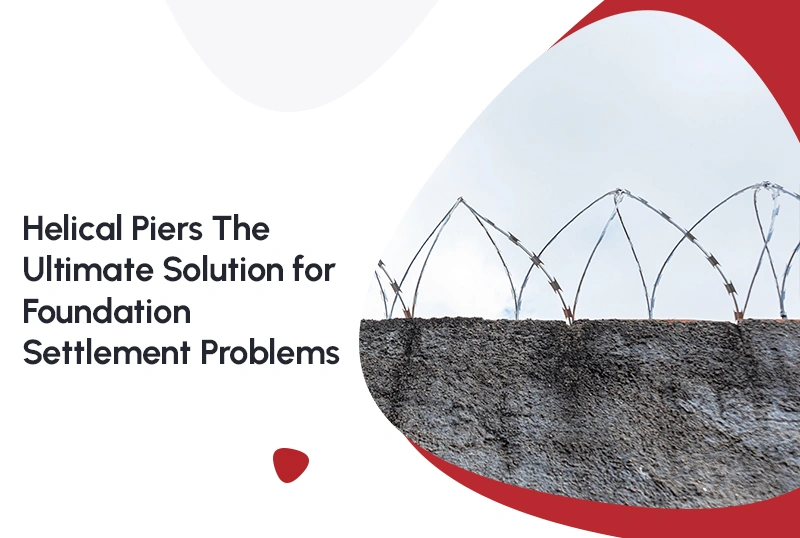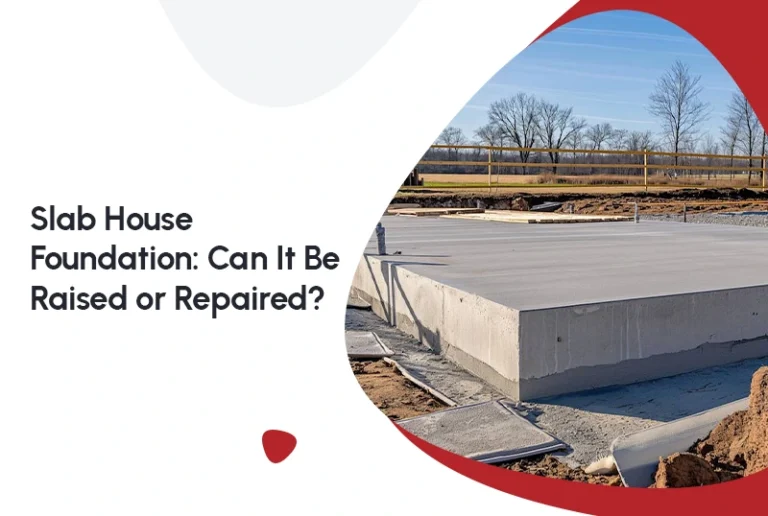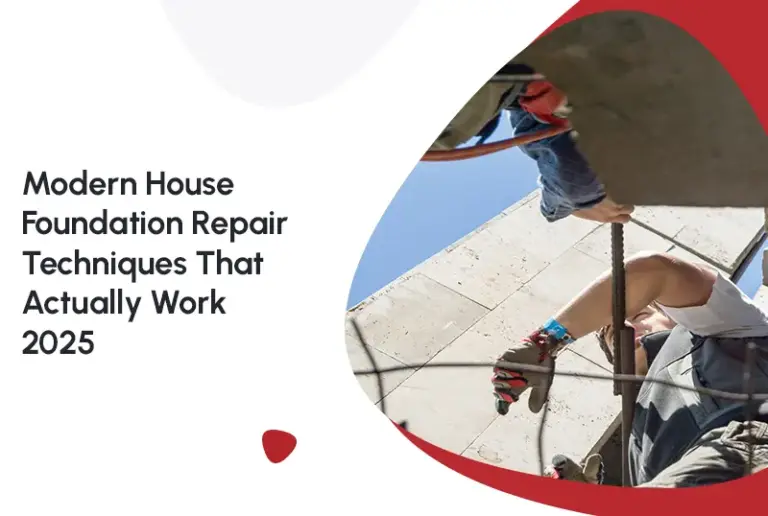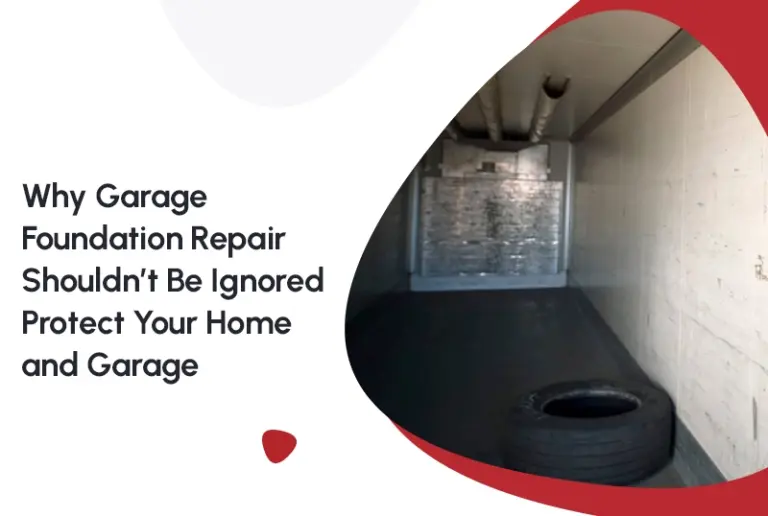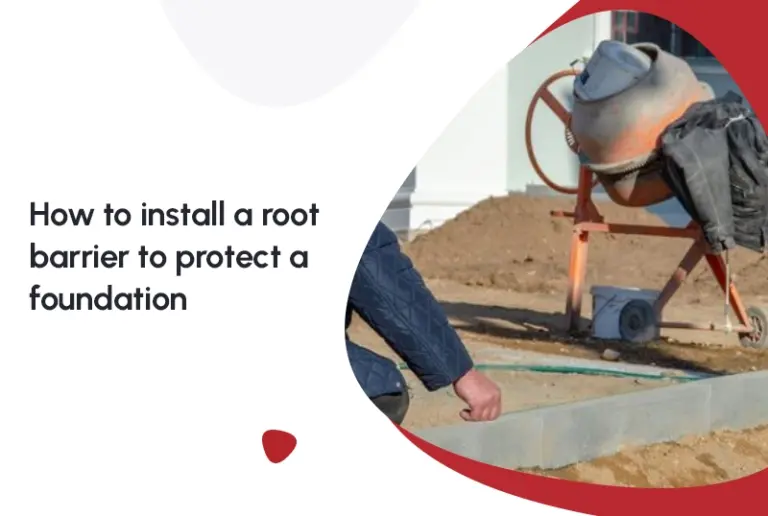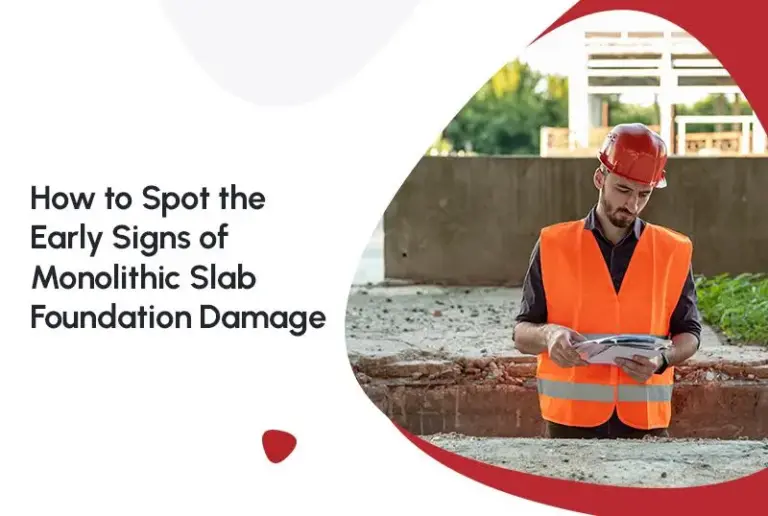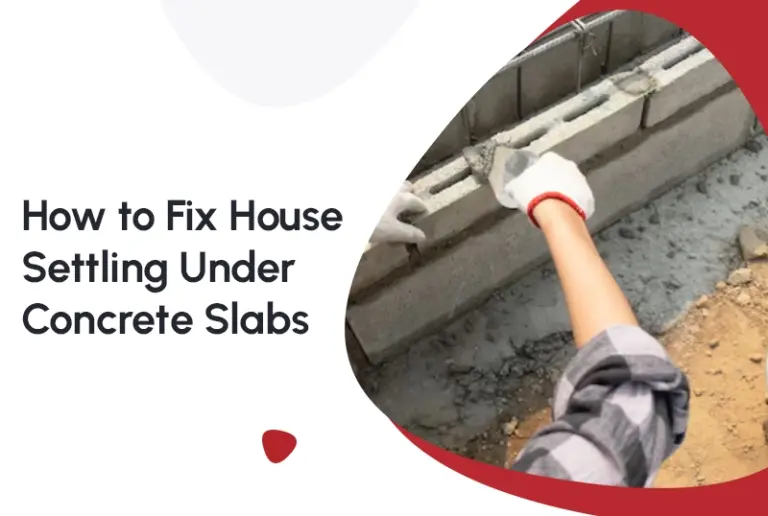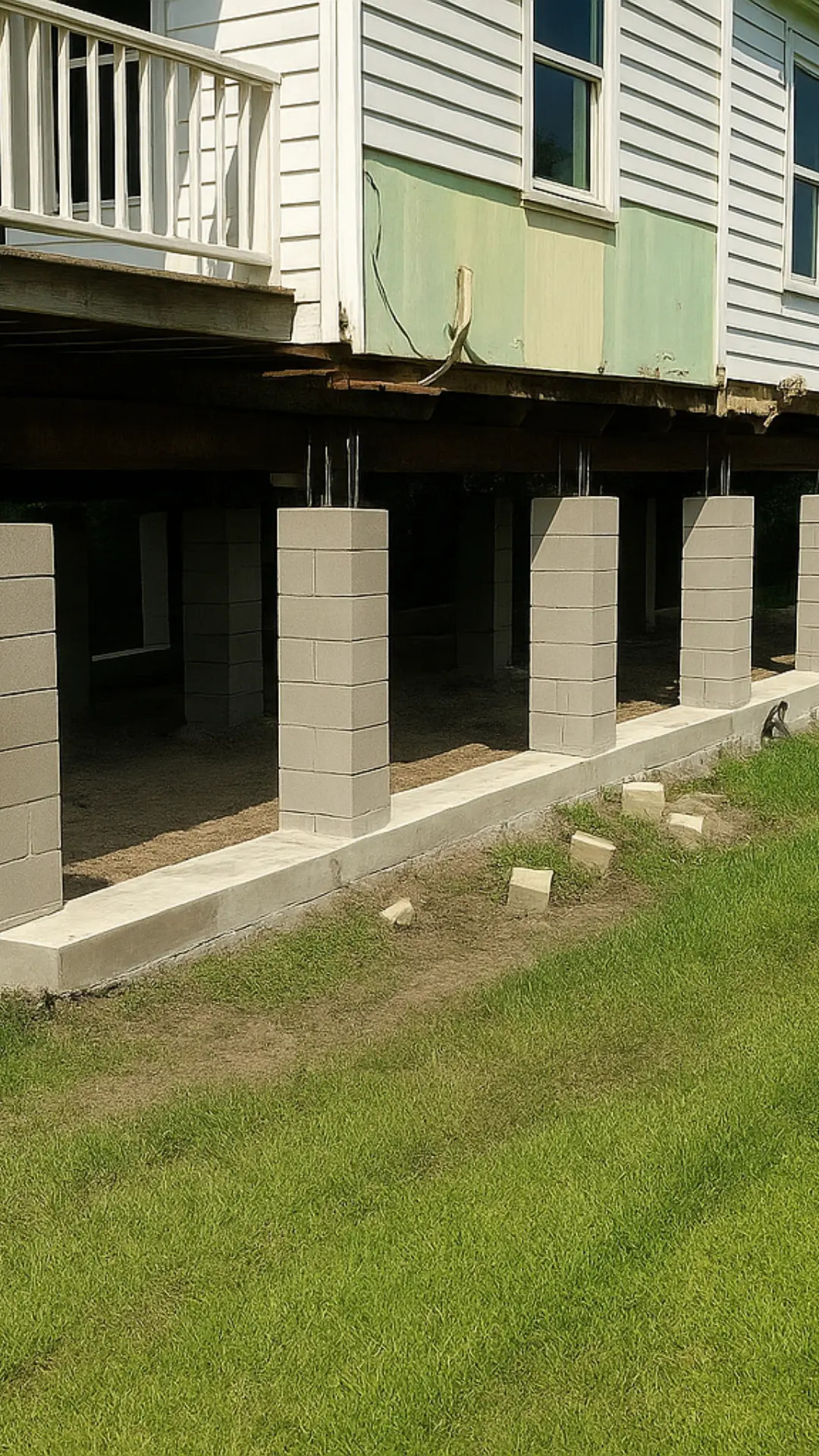When it comes to foundation settlement, the key is choosing a solution that’s proven, long-lasting, and efficient. Helical piers are that solution. These advanced anchoring systems are ideal for stabilizing sinking or shifting foundations across both residential and commercial structures.
Whether your home is suffering from uneven floors, cracked walls, or sinking concrete, the use of helical piers can restore structural integrity without the need for extensive excavation. They’re particularly effective in areas with unpredictable soil conditions, which makes them a top choice across a wide range of environments.
In the world of Under Slab Tunneling, where soil displacement is a major concern, they provide crucial support during excavation and construction. This approach not only minimizes risk but also ensures your property remains structurally sound during major projects.
What Are Helical Piers and How Do They Work?
Helical piers also known as screw piles or helical piles are deep foundation solutions designed to support structures experiencing settlement or inadequate soil conditions. Made from steel shafts with helical flights welded to them, these piers are mechanically screwed into the ground until they reach stable soil or load-bearing strata.
Once installed, brackets are attached to the foundation footing, effectively transferring the structure’s weight to the stable soil below. This prevents further sinking and lifts the foundation back to its original position in many cases.
Benefits of Helical Piers
Minimal Excavation:
This foundation solution requires very little digging, keeping your property neat and disturbance-free. The process is quick, clean, and ideal for projects where heavy excavation would be costly or disruptive.
Immediate Load-Bearing:
Once installation is complete, the system can begin supporting the structure right away. This immediate strength allows for faster project timelines and reduces waiting periods common with traditional foundation methods.
Cost-Effective:
Compared to full-scale foundation replacement, this approach is both affordable and efficient. Reduced labor, minimal equipment, and faster installation help homeowners save significantly while achieving lasting results.
Versatile Applications:
The technology can be used for everything from stabilizing existing foundations to supporting new builds. It performs well across different soil types and is suitable for residential, commercial, and industrial projects alike.
Long-Term Stability:
Engineered with corrosion-resistant materials, this solution provides decades of dependable support. Once in place, it maintains foundation strength and resists shifting or settling caused by soil movement and weather conditions.
Despite how common foundation issues are, most homeowners delay taking action until visible damage appears. In fact, research shows that only about 7% of homeowners ever invest in structural foundation repairs, even though a much higher percentage of homes experience related problems. This highlights why early intervention using stable, long-term solutions is crucial for preventing costly future damage.
Why Helical Piers Are the Right Choice
In areas with expansive clay or sandy soils, traditional foundations often fail. Helical piers bypass unstable layers, anchoring deep into solid ground. This makes them ideal for buildings affected by shifting ground or poor compaction. Their installation doesn’t rely on curing time, so repairs are faster and less disruptive than concrete underpinning methods.
While other solutions may offer temporary relief, helical piers address the root cause of foundation settlement. They’re the preferred method for engineers and contractors looking for a permanent solution.
In mid-sized repairs involving Concrete Leveling, combining helical piers with foam or mudjacking methods can offer an all-in-one solution. The piers handle the structural load while leveling addresses cosmetic or minor alignment issues on the surface.
Signs You Need Helical Piers
- Cracks in brick, drywall, or concrete slabs
- Doors and windows that stick or won’t close
- Uneven or sloping floors
- Gaps between walls and ceilings or floors
These symptoms are often signs of soil movement beneath your foundation. If left untreated, they can worsen and lead to costly repairs or even structural collapse.
Helical Piers vs. Other Foundation Repair Methods
| Feature | Helical Piers | Push Piers | Concrete Underpinning |
| Soil Disruption | Low | Moderate | High |
| Load Bearing Time | Immediate | Delayed | Delayed |
| Installation Time | Fast | Moderate | Long |
| Cost Efficiency | High | Medium | Low |
| Adaptability | Excellent | Good | Limited |
In most cases, helical piers outperform alternatives when speed, reliability, and soil conditions are critical factors. Their modular design allows customization based on soil reports and structural needs.
How Much Do Helical Piers Cost?
The cost varies based on the number of piers required, the depth of installation, and regional labor rates. On average, expect to pay between $1,500 and $3,000 per pier.
If you’re comparing this to broader repair options, understanding the slab leak repair cost is essential, especially when plumbing issues compromise your foundation. Helical piers can support the structure while internal plumbing is repaired or replaced.
Installing Helical Piers: What to Expect
- Soil Evaluation: Engineers assess soil conditions and determine the required depth and load.
- Pier Installation: Piers are drilled into the ground using hydraulic machinery.
- Bracket Attachment: Steel brackets are secured to your home’s foundation.
- Load Transfer: The building’s weight is shifted to the piers, lifting and stabilizing the structure.
- Finishing: Any disturbed landscaping or concrete is restored.
Unlike many repair methods, this process is fast typically completed within 1–3 days and minimally invasive, making it ideal for tight spaces or urban lots.
Why Choose FNF Foundation for Helical Pier Installation?
FNF Foundation is a trusted name in structural repair across Texas. With decades of experience and certified installation crews, we ensure every job meets the highest standards for safety, durability, and performance.
From residential homes to commercial buildings, FNF Foundation tailors each helical pier system to your specific soil type and foundation needs.
Trusted Applications of Helical Piers
- Residential and commercial foundation repair
- New construction support
- Retaining wall reinforcement
- Deck and porch stabilization
- Light pole and sign anchoring
In all these scenarios, helical piers deliver unmatched load-bearing capacity and reliability.
In larger projects such as House Leveling, the integration of helical piers plays a key role in ensuring balanced elevation while preventing further sinking. Their precision and adaptability make them ideal for addressing both minor and major settlement issues.
Final Thoughts
Helical piers are revolutionizing the way we approach structural foundation repair. They’re clean, fast, and long-lasting and most importantly, they’re designed to solve the problem, not just patch it.
Whether you’re dealing with a minor settlement or a serious shift in your home’s foundation, FNF Foundation is here to help. We’ve been at the forefront of providing modern solutions to old problems and helical piers are one of our most trusted tools.
So, if you’re facing foundation issues, don’t wait. Choose helical piers and protect your investment for decades to come. Especially in cases where Tunneling, Concrete Leveling, or House Leveling has already been performed, helical piers offer the strength and reliability needed to maintain stability long-term.
FAQs (Frequently Asked Questions)
1. How deep do helical piers go?
Typically between 10 to 30 feet, depending on soil conditions.
2. Can helical piers be used in new construction?
Yes, they’re ideal for unstable soil and can prevent future settlement.
3. How long do helical piers last?
They can last over 100 years if properly installed and maintained.
4. Are permits required for helical pier installation?
Yes, most cities require permits, but FNF Foundation handles that process.
5. Can they be installed in bad weather?
Yes, the equipment can operate in most conditions, unlike traditional concrete methods.
6. Are helical piers better than push piers?
In many cases, yes. Helical piers offer immediate load capacity and are ideal in soft or wet soils.
